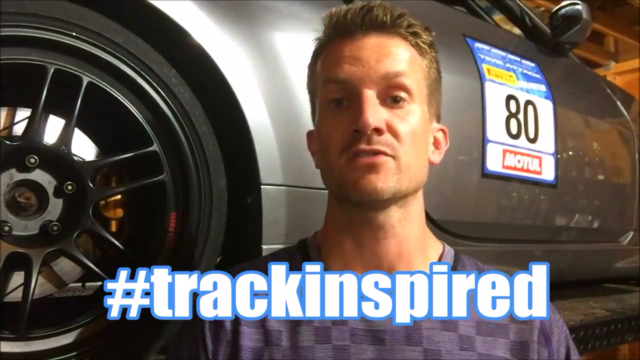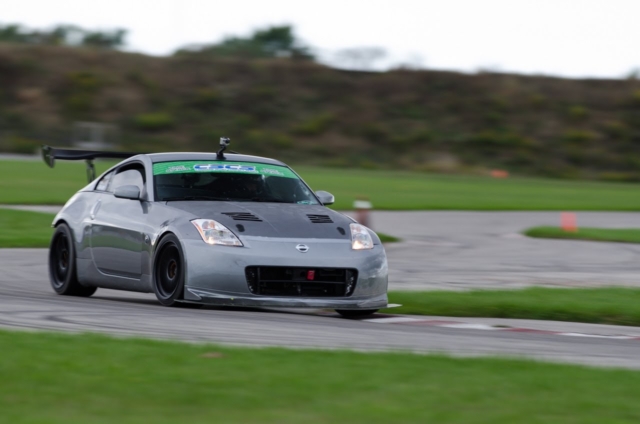As the 350Z is one of the cheapest modern performance cars on the market now, anyone sensible looking for a friendly GT-style track car with strong torque and great high-speed stability should consider the Nissan. Michael Gardner’s taken his 350Z to extremes and bestows us with ten-plus years of experience with Nissan’s heavyweight.
The general objective for an aspiring track rat is longevity and resilience—not incredible speed. More than power or downforce, the heavy Z needs help in a few areas to ensure long strings of flat-out laps where the mechanical components aren’t limiting the driver. Seat time, not lap time, is the goal.
Before taking the Z to the track, there are a few modifications that should be considered. Tires are first. They shouldn’t be too aggressive, but it helps to have a set of modest sport tires. All-seasons are worthless after a few hot laps, anyways.
Considering the weight, the Z needs a few braking improvements to prevent the stoppers from turning to mush at the end of a session. Decent pads, the stock Brembo calipers (as available on the Track and Grand Touring models), and heat-resistant fluid will help prevent a frustrating, mushy middle pedal just as the driver’s ready to push. With a decent radiator in place—Koyos work well—the car ought to have enough endurance for a driver to familiarize themselves with character of the car on the circuit.
Tipping the scales at 3,188 pounds in its lightest configuration, the 350Z is a little hefty for the track. Unfortunately, most of its heft is loaded over the front end, which destroys the undersized front tires over the course of an aggressive lapping session, and doesn’t help at the other end of the machine either.
“It’s absolutely crucial to go to a square setup,” suggests Brian Lock, NASA racer and Nissan Z authority. Not only will this minimize understeer, but it will help encourage a natural rotation from the rear of the car. Fortunately, a 275-section front tire is easily squeezed under the front fenders without any massaging, “but the camber, offset, and ride height need to be just right,” adds Lock.
This is the point at which shocks should be considered. Konis will do, and provided the spring rate and the dampening is appropriate, now is the time to consider stickier tires. R-compound tires will help enormously at this stage, but they also bring on their own set of problems.
With more grip, the lateral loading increases, and the inside wheelspin is exacerbated—as counter-intuitive as that may seem. Therefore, to ensure some stability and strong traction, he Z benefits from a strong limited-slip differential. OS Giken and Nismo products work well, and though they’re pricey, they make a difference.
It might chew up a few thousand dollars, but considering how cheap these cars are, it’s not a terrible deal. This short list of upgrades take the 350Z from a sumptuous and compromised cruiser to a snarling track car which might even be capable of taking down Porsches.























